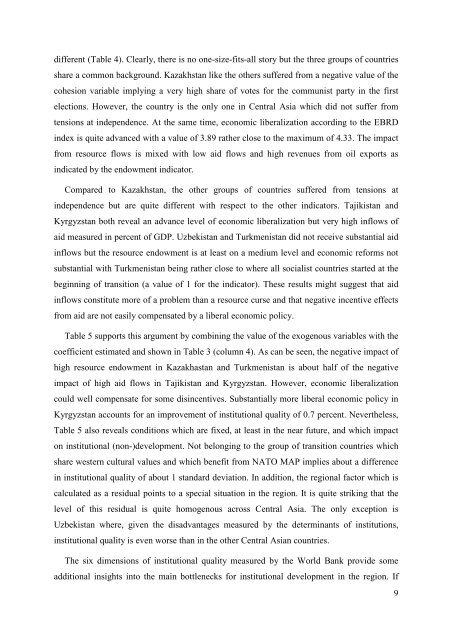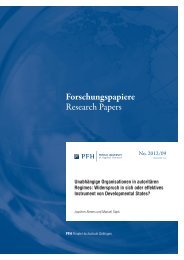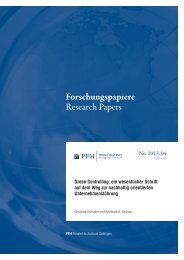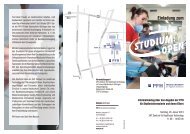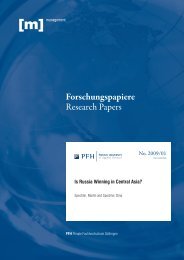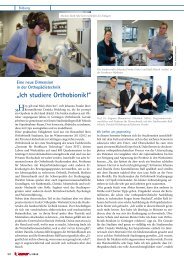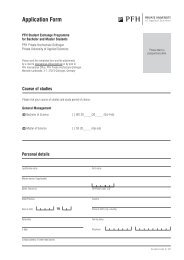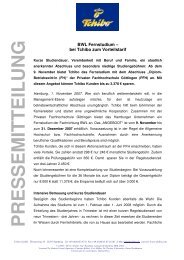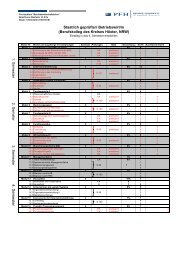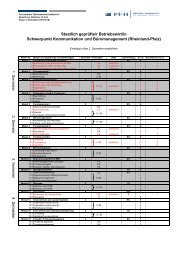View - PFH Private Hochschule Göttingen
View - PFH Private Hochschule Göttingen
View - PFH Private Hochschule Göttingen
Create successful ePaper yourself
Turn your PDF publications into a flip-book with our unique Google optimized e-Paper software.
different (Table 4). Clearly, there is no one-size-fits-all story but the three groups of countries<br />
share a common background. Kazakhstan like the others suffered from a negative value of the<br />
cohesion variable implying a very high share of votes for the communist party in the first<br />
elections. However, the country is the only one in Central Asia which did not suffer from<br />
tensions at independence. At the same time, economic liberalization according to the EBRD<br />
index is quite advanced with a value of 3.89 rather close to the maximum of 4.33. The impact<br />
from resource flows is mixed with low aid flows and high revenues from oil exports as<br />
indicated by the endowment indicator.<br />
Compared to Kazakhstan, the other groups of countries suffered from tensions at<br />
independence but are quite different with respect to the other indicators. Tajikistan and<br />
Kyrgyzstan both reveal an advance level of economic liberalization but very high inflows of<br />
aid measured in percent of GDP. Uzbekistan and Turkmenistan did not receive substantial aid<br />
inflows but the resource endowment is at least on a medium level and economic reforms not<br />
substantial with Turkmenistan being rather close to where all socialist countries started at the<br />
beginning of transition (a value of 1 for the indicator). These results might suggest that aid<br />
inflows constitute more of a problem than a resource curse and that negative incentive effects<br />
from aid are not easily compensated by a liberal economic policy.<br />
Table 5 supports this argument by combining the value of the exogenous variables with the<br />
coefficient estimated and shown in Table 3 (column 4). As can be seen, the negative impact of<br />
high resource endowment in Kazakhastan and Turkmenistan is about half of the negative<br />
impact of high aid flows in Tajikistan and Kyrgyzstan. However, economic liberalization<br />
could well compensate for some disincentives. Substantially more liberal economic policy in<br />
Kyrgyzstan accounts for an improvement of institutional quality of 0.7 percent. Nevertheless,<br />
Table 5 also reveals conditions which are fixed, at least in the near future, and which impact<br />
on institutional (non-)development. Not belonging to the group of transition countries which<br />
share western cultural values and which benefit from NATO MAP implies about a difference<br />
in institutional quality of about 1 standard deviation. In addition, the regional factor which is<br />
calculated as a residual points to a special situation in the region. It is quite striking that the<br />
level of this residual is quite homogenous across Central Asia. The only exception is<br />
Uzbekistan where, given the disadvantages measured by the determinants of institutions,<br />
institutional quality is even worse than in the other Central Asian countries.<br />
The six dimensions of institutional quality measured by the World Bank provide some<br />
additional insights into the main bottlenecks for institutional development in the region. If<br />
9


